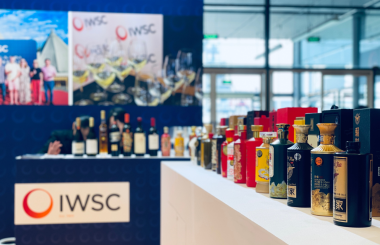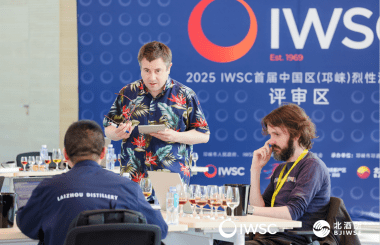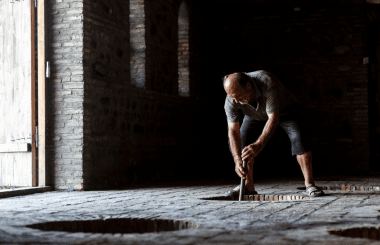Visit of Corkwise Laboratory – March 10th 2011 (Sabrina Belkadi)
As part of the Waitrose / IWSC sponsored WSET Diploma scholarship, I was given the unique opportunity to visit the Corkwise Laboratory which specialises in the technical analysis of wines. The process of technical analysis not only meets a legal requirement for all wines and spirits being commercialised, but it also helps producers during the winemaking process as well as importers and distributors at every stage of commercialisation. Analytical data gives an invaluable insight of the state of the wine today but also of its likely evolution during its life cycle.
The visit of Corkwise was extremely informative and helped to put in context the teachings of the Unit 2 Diploma on Wine Production (Viticulture & Vinification). To this effect, I would like to send a personal thank you to Rachel Taylor, wine analyst at Corkwise for her time and detailed overview of the laboratory facilities.
An introduction to Corkwise & the Campden BRI group
Corkwise is located in Nutfield, Surrey in the South East of England and is part of the Campden BRI group. This group consists of laboratories specialising in analysing wines and spirits, beers, research into brewing techniques and the analysis of food manufacturing, safety and packaging.
Within the group, Corkwise is an independent laboratory that operates within the same site as its sister company BRI that specialises in the analysis of beers and brewing research. Campden, located in the Cotswolds focuses on the analysis of food manufacturing, hygiene, safety, packaging and the technical analysis of food products from a sensory, chemical and microbiological perspective.
Who are Corkwise customers?
Corkwise is the only independent wine laboratory in the UK
The majority of English vineyards use the services of Corkwise to help them with their wine evaluations and Corkwise also work closely with educational outfits such as Plumpton College that teach a practical course in wine analysis.
Another dimension of the Corkwise business is the commercialisation of oenological products such as yeasts, oak barrels, chips and staves.
Why conduct a technical analysis?
The advances in viticulture and winemaking technology all contribute to promoting high standards of quality. Over the years, technical evaluation has gained in importance and recognition and has become an essential step of the winemaking process as it helps guaranteeing those standards of quality.
The evaluation can be conducted at various stages of the wine production e.g. during fermentation, pre-bottling, pre-shipping in bulk or post-bottling. By evaluating wines at the different stages of pre-commercialisation, wine producers and importers are able to catch potential issues and defects early and avoid the commercial risks of releasing a product that may not be fit for consumption. The analysis post-bottling helps producers understand if the wine has been contaminated during the bottling process and also offers a vital final check ahead of the distribution of the product.
In the context of the IWSC, the technical evaluation allows to determine whether the wines that have been recommended for an award meet all the required technical standards of quality. During the six months of the Competition, Corkwise analyses thousands of wines and spirits being produced from all around the world. Depending on the result of the technical evaluation, wines may be rejected if some of the parameters of the technical analysis make them unfit for public consumption; or, wines may be downgraded following some technical mark deductions.
More details on the wine & spirits analysis
The chemical analysis of wines is essential for the winemaker or the commercial entities that will be distributing the wines and ensures that the wines commercialised, meet the legal requirement. EU legislations set a list of maximum levels for the various compounds in wines, which serve as a framework for the chemical evaluation.
A typical chemical wine analysis will cover some of the compounds such as SO2 (free and total sulphur dioxide), alcohol levels, sugar content, volatile acidity (acetic acid), pH, ascorbic acid, residual CO2 (carbon dioxide), total dry extract (TDE), calcium, potassium, sodium levels and importantly, it measures residual traces of metals such as copper or iron.
Below are more details on some of the components measured during the test:
- Sulphur
- Pretty much all wines contain residual sugar. Fructose and glucose only are found in nature and any trace of sucrose found can be indicative of illicit additions of sugar in the wine
- Volatile acidity results from the oxidation of wine and causes wines to develop vinegar-like or nail varnish smells. Some wines such as Chateau Musar of Lebanon have made a trademark of their high levels of acetic acid / volatile acidity although abnormally high levels of acetic acid would usually be considered as a fault
- pH measurement helps interpret the level of acidity in wines. Most whites would have lower pH than reds and depending on the climate, wines tend to be more or less acidic. Some of the English wines tested by Corkwise fall below 3 in pH which is extremely low when considering a neutral pH of 7
- Residual CO2 (carbon dioxide) may be found in wines soon after their fermentation or due to anaerobic winemaking conditions. The presence of CO2 most commonly found in white wines, gives the wine a spritz and an impression of crispness and freshness on the palate.
- The Total Dry Extract is a calculated measure as opposed to a chemical test and aimed at identifying any fraudulent additions of sugar or water during the winemaking process.
From my conversation with Rachel Taylor, wine analyst at Corkwise, one of the most common faults found during the analysis is excess copper, which may result from the excessive spraying and treatment with copper sulphate to prevent mildew in the vineyards. Also, due to the use of anaerobic winemaking (especially for white wine production) and screwcap closures, some wines tend to develop high levels of hydrogen sulphide (H2S), which may impart smells of rotten eggs or onions to the wines.
Wines are also put through a cold stability test (at -4C for 3 days) to ensure that they are tartrate stable. Tartrate crystals may form in wine and although harmless, they are considered a fault by customers so it is helpful to detect upfront the potential a wine has to develop crystals over time.
Clients of Corkwise may also choose to send their wines for microbiological analysis to test some of the more volatile compounds such as brettanomyces or TCA (commonly referred as the ‘cork taint’) that may taint or spoil the wine as it evolves. Similarly, since wine is a living product that matures and evolves over time, it is important to make an assessment of potential microorganisms such as yeasts and bacteria as they can grow and further develop over time and affect the quality of the final product. This is particularly important after the bottling stage as wines may become contaminated during more or less hygienic bottling process.
Spirits and liqueurs, in the context of the competition are also tested to establish their alcohol and sugar contents. There is a particular emphasis on measuring the residual levels of methanol in spirits and on making sure they meet all requirements for public distribution and consumption. Similar to wines, spirits or liqueurs that are not meeting the technical standards required may be downgraded or rejected.
On average, the complete analysis takes about a week and results are sent to the producers, importers or the Competition with a complete chemical and if required a microbiological report.



